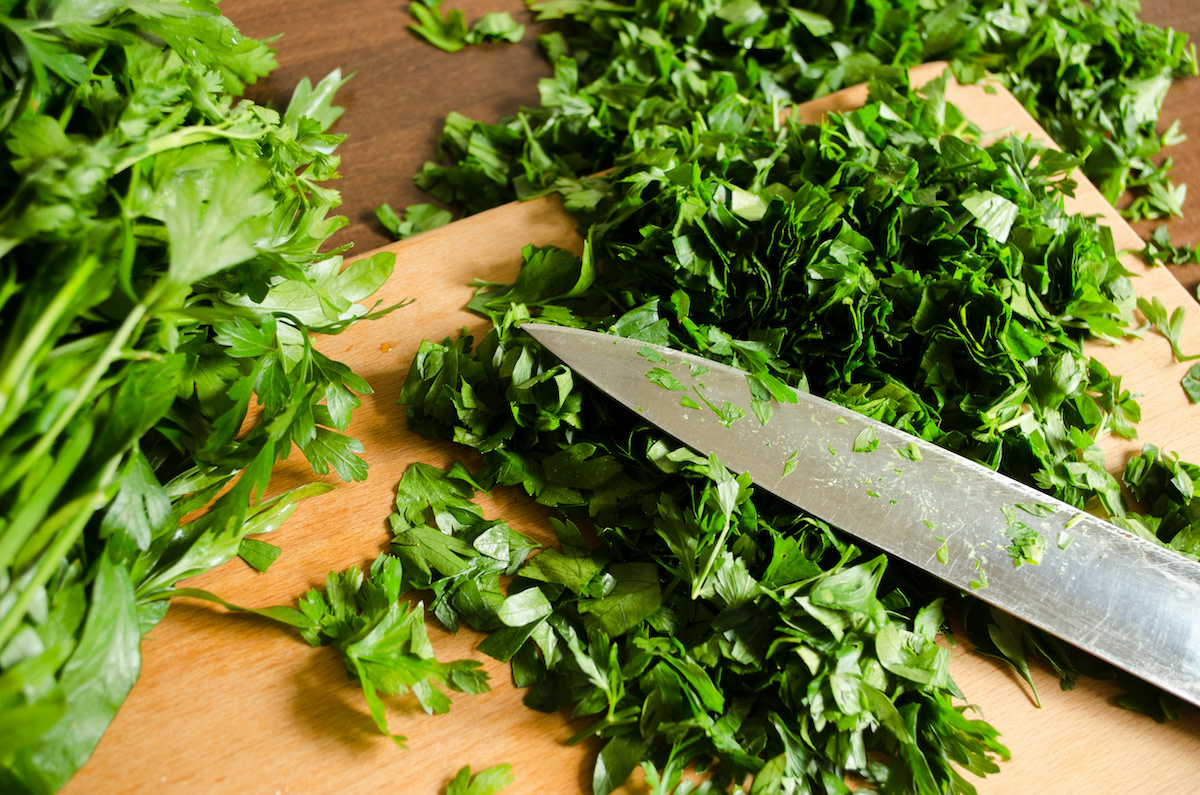Cilantro vs. Parsley: Key Similarities and Differences
Written by MasterClass
Last updated: Aug 27, 2021 • 3 min read
The tastes of cilantro and parsley are vastly different, although their culinary uses can be similar. Both have tender green leaves that you can use for garnishing dishes or as a main ingredient.
Learn From the Best
What Is Cilantro?
Cilantro (Coriandrum sativum) is a leafy green herb in the Apiaceae family of plants with delicate leaves and stems. While some countries refer to the leaf of the plant as coriander leaves, the United States calls the leaves cilantro and the seed of the plant coriander. Grind coriander seeds and use the powder in spice blends or on its own. Some people refer to cilantro as Chinese parsley; however, cilantro and parsley are two different green herbs.
What Is Parsley?
A member of the Apiaceae family, parsley (Petroselinum crispum) is a leafy herb that originated in the Mediterranean region. Cooks use it heavily in the cuisines of the area, such as Italian and Greek. Curly leaf parsley and flat-leaf parsley are two common types of parsley. Most recipes call for curly parsley because of its stronger flavor.
Parsley vs. Cilantro: Key Similarities and Differences
The two fresh herbs appear similar, so you can easily grab a bunch of cilantro thinking it’s parsley or vice versa if you don’t check the labels in the grocery store. But just as there are similarities, there are differences between the herbs, too.
- 1. Flavor: Due to compounds called aldehydes in cilantro, some people say cilantro tastes soapy. (Aldehydes are, in fact, a common byproduct in the process of soap making.) However, the dislike of the strong flavor is completely genetic. Parsley, on the other hand, has a mild, somewhat grassy flavor. Chefs and home cooks alike use both herbs to add flavor to dishes of all types of cuisine.
- 2. Folate: The B vitamin known as folate helps the body make DNA and other cells. Parsley contains around eleven percent of the daily recommended value, and cilantro has just four percent.
- 3. Calories: Even though it’s only a difference of a few calories, parsley does contain more calories than cilantro. When it comes to their nutritional values, both parsley and cilantro contain vitamins and nutrients, but they differ in terms of the types and amounts.
- 4. Scent: Cilantro leaves have a stronger, spicier smell than Italian parsley leaves, which might be an easy way to tell the difference between the two when you’re at a grocery store. Parsley has a fresh, mild scent or could possibly smell like nothing, depending on the age of the parsley.
- 5. Use: Chefs often use fresh parsley as garnish and dried parsley as a flavoring. Sauces like pesto and chimichurri taste fresher when you utilize fresh parsley. You can use cilantro in guacamole or chutneys, as a garnish for Mexican dishes like tacos, or in a Latin American dish like cilantro-lime rice. Both herbs work well in side dishes like tabbouleh or other grain dishes.
- 6. Vitamin A: Both fresh parsley and cilantro have similar levels of vitamin A—forty-seven percent and thirty-eight percent, respectively.
- 7. Vitamin C: Fresh cilantro has about thirteen percent of the daily recommended value of vitamin C, compared to sixty-two percent in parsley. Vitamin C can be a crucial nutrient for tissue repair in humans.
- 8. Vitamin K: Required for the binding of calcium to bones and necessary blood clotting, vitamin K is more prevalent in parsley than in cilantro. The levels in parsley actually far exceed the daily recommended amount, but the amount in parsley doesn’t pose a risk of toxicity since the body uses the vitamin efficiently.
Want to Learn More About Cooking?
Become a better chef with the MasterClass Annual Membership. Gain access to exclusive video lessons taught by the world’s best, including Gordon Ramsay, Gabriela Cámara, Chef Thomas Keller, Dominique Ansel, Yotam Ottolenghi, Alice Waters, and more.
